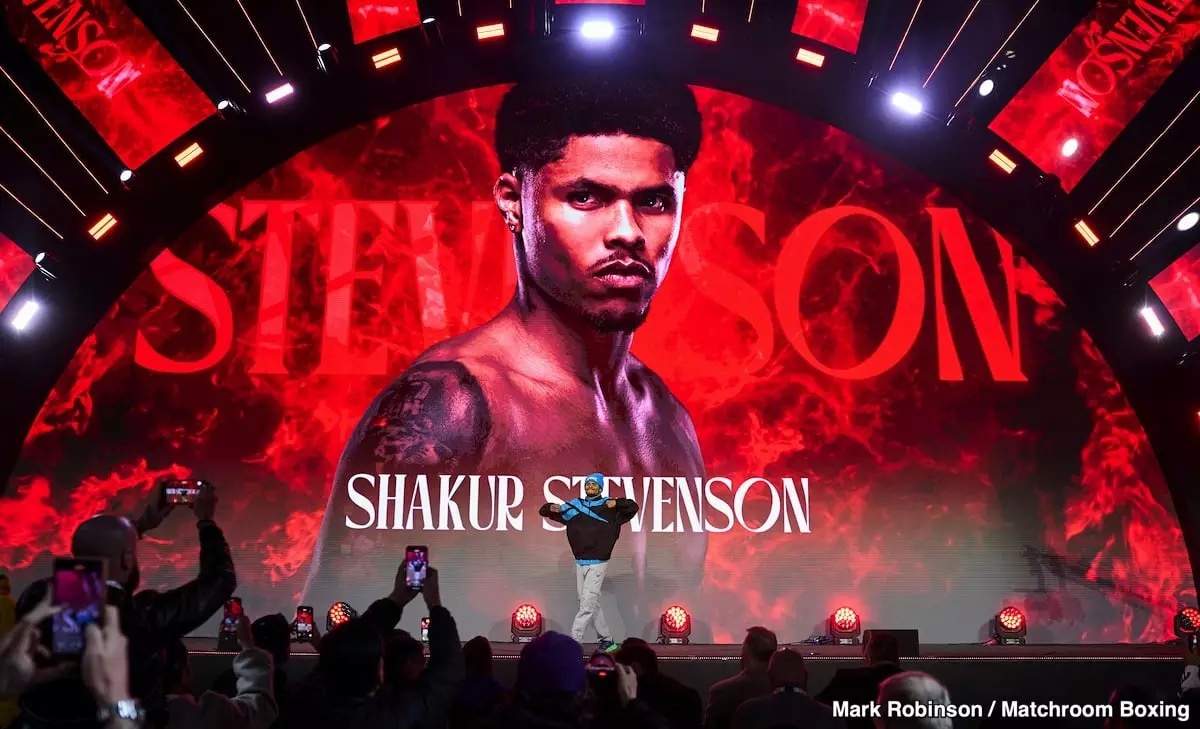Shakur Stevenson is grappling with a complex mix of emotions as he reflects on his boxing career and missed opportunities. His disappointment stems especially from the refusal of Vasyl Lomachenko, a fighter he deeply admired, to engage in a bout. The frustration Stevenson feels is indicative not just of a longing for validation from a seasoned champion but speaks to a broader theme within the sport of boxing—the struggle for recognition in an industry where popularity often overshadows skill.
Stevenson, only 26 and still on the ascent in the lightweight category, has witnessed Lomachenko’s illustrious career, noting that he had once regarded him as a role model. This admiration, now tinged with frustration, reveals the harsh realities athletes face when their aspirations collide with the realities of the boxing business. Stevenson’s outcry over Lomachenko’s decision to sidestep a potential showdown is more than personal; it represents a pivotal moment for him as he seeks to solidify his place among the elite.
Lomachenko: A Legend’s Dilemma
The former three-division world champion Vasyl Lomachenko hasn’t just been sidelining fights; he’s been navigating his own career’s murky waters. At 37, age and its accompanying challenges are undeniable, and they factor into his decision-making as well. While he has delivered impressive performances, such as his recent fight against George Kambosos Jr., the question beckons: how much longer can he maintain his high level of competition? For a fighter who has triumphed on the grand stage, choosing to avoid an up-and-comer like Stevenson, who lacks the same commercial appeal, could be viewed as a strategic retreat rather than a simple dismissal.
For Stevenson, this leaves a bitter taste. The young fighter desperately craves validation through competition against renowned adversaries. Dependency on a potential clash with Lomachenko highlights Stevenson’s internal struggle—a conflict between wanting to break through perceived glass ceilings and being viewed as an underdog with limited notoriety. This relationship is laced with complexities, as Lomachenko’s career choices indeed reflect the almost transactional nature of high-profile boxing matches.
The Impact of Public Perception
It’s worth analyzing how public perception plays a crucial role in defining a fighter’s journey. Stevenson notes his feelings of disillusionment in a conversation with Chris Mannix from Ring Magazine, stating that he feels more let down by Lomachenko than Gervonta “Tank” Davis, who operates within an entirely different sphere of fame and clout. Even amid dissatisfaction, there’s a sense of clarity in Stevenson’s understanding of the game—he acknowledges Tank’s star power dictates the tempo and timeline for any potential fight, while Lomachenko’s choices feel more personal, casting a shadow over Stevenson’s motives.
This dynamic is a tough pill to swallow for many athletes—when they realize that intrinsic ability and dedication might not be enough to secure significant opportunities. It’s a harsh reality that necessitates adaptability and perhaps a rethinking of strategies to enhance appeal. Boxers like Stevenson must find ways to elevate their presence in a sport often defined by numbers rather than skills.
The Technical Divide
However, beyond the emotional landscape lies an analysis of the boxing styles themselves. Stevenson is an incredibly defensively sound fighter, but critics often highlight a perceived lack of offensive potency. His abilities could be seen as inadequate against a fighter like Lomachenko, who possesses a unique blend of speed, power, and technical prowess. The possibility of a contest between these two would certainly spotlight a notable gap in how the offense impacts overall effectiveness—a gap that Stevenson must confront directly in his journey forward.
In this light, Stevenson’s path forward is twofold: he must assert his grievances in the ring through meaningful matches while simultaneously refining his offensive strategies to ensure he can eventually stand toe-to-toe with the legends he currently admires. This dual approach could ensure that disappointment doesn’t define his legacy, rather, it transforms into an impetus for growth, forcing him to evolve in both skill and presence in a sport that often rewards the loudest voices rather than the most skilled hands.
As Stevenson charts this tumultuous course, boxing fans will watch with bated breath, eager to see if the once-admired athlete can translate his raw potential into a defining moment that resonates beyond mere disappointment.

